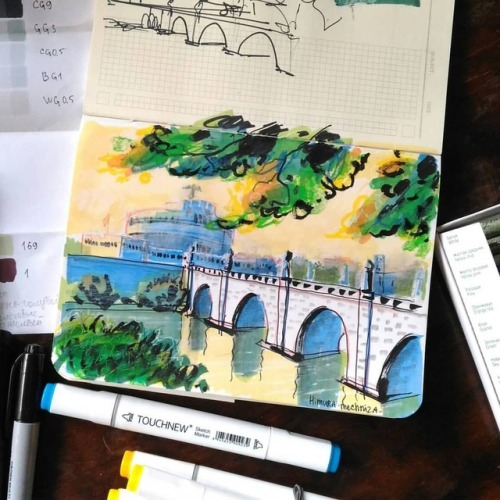#tevere
Inktober, day 23/31
.
Autumn vibes of #Rome Castel sant Angelo on #Tevere !
Uf, I haven’t done city sketches in ages, and, honestly, feel I forgot how to do it xD .
.
Materials: Edding liners, brush ink pen, black marker, Touchnew markers, white chalk, graphite, oil pastel.
.
.
.
.
.
.
.
.
.
.
#illustration #illustrator #graphics #inktober2018 #inktober2018day23 #inktober #sketch #sketchart #citydrawing #citysketch #traditionalartist #traditionalart #art #artist #idraw #drawing #instaart #instaartist #roma #sketchbook #italy #quickdraw #castelsantangelo #architecturalsketch #inktober2018_himura_mechniza #sketch_himura_mechniza #architecture_himura_mechniza
https://www.instagram.com/p/BpRfTwRlcnS/?utm_source=ig_tumblr_share&igshid=oaflnqggpaex
Post link
THEHORREA GRANDI OF OSTIA








Aelius Aristides called Rome “the warehouse of the world.” The numerous warehouses of Ostia, Portus, and Rome itself suggest that his comment was not just a metaphor.
The emperors viewed the annona, or grain dole, as a mechanism for social control. The distribution of free grain mitigated against popular unrest and bought he passive acquiescence of the plebs to imperial and senatorial control of the state. Securing the grain supply and facilitating its efficient transport and distribution quickly became a matter of paramount importance.
In the ancient world all important travel and trade went by sea. Set inland, Rome’s access to the all-import Mediterranean was located at the mouth of the Tiber. Ships docked and unloaded in the town of Ostia or in Portus, the new, man-made harbor designed by Claudius and expanded by Trajan. The exceptionally large and complex building, located on the Tiber in Ostia is presumed to be part of Claudius’ upgrade of Rome’s ports. Designed to store shipments arriving from Egypt, North Africa, and Sicily, the Horrea Grandi was the most important building in Ostia. The vast warehouse had storage capacity for approximately 6,000 metric tons of grain, or the annual grain allowance of 16,000 people.
The Horrea Grandi was expanded under Nero, again by Commodus, and by the Severans. The building chronology is traced through examination of the changes in the types of materials and construction techniques revealed in the excavated parts of the warehouse.
Given their important civic function, the late Republican and early imperial horrea in Rome and Ostia were dignified affairs. The east and west façades of the Horrea Grandi were made of ashlared blocks of tufa (opus quadratum), with rusticated surfaces clearly reflecting the taste of Claudius. The U-Shaped inner courtyard was surrounded by a doric colonnade with travertine capitals.
In the later expansions, brick-faced concrete (opus latericium) replaced tufa and travertine blocks. The brick was probably chosen due to its fire resistance, and the high quality and precision of the brickwork indicates the on-going importance of the horrea’s function. A second floor was added by the Antonines, thereby doubling the storage capacity. The added weight was counter-balanced by exterior strainer arches spanning the street on the south side, which increased the load bearing capacity of the walls. Raised floors (suspensurae) were installed on the ground floor to allow for the circulation of cool air beneath the grain to prevent spoilage.
While the dependency on African grain did not diminish, in the 4th century the grain shipments gradually shifted from Ostia to Portus. Ostia transformed into a wealthy seaside city focused on the beach, not the Tiber. The horrea gradually fell out of use and the entire Tiber banks of Ostia were allowed to decay.
Another, even larger, horrea in Ostia remains completely unexcavated.



